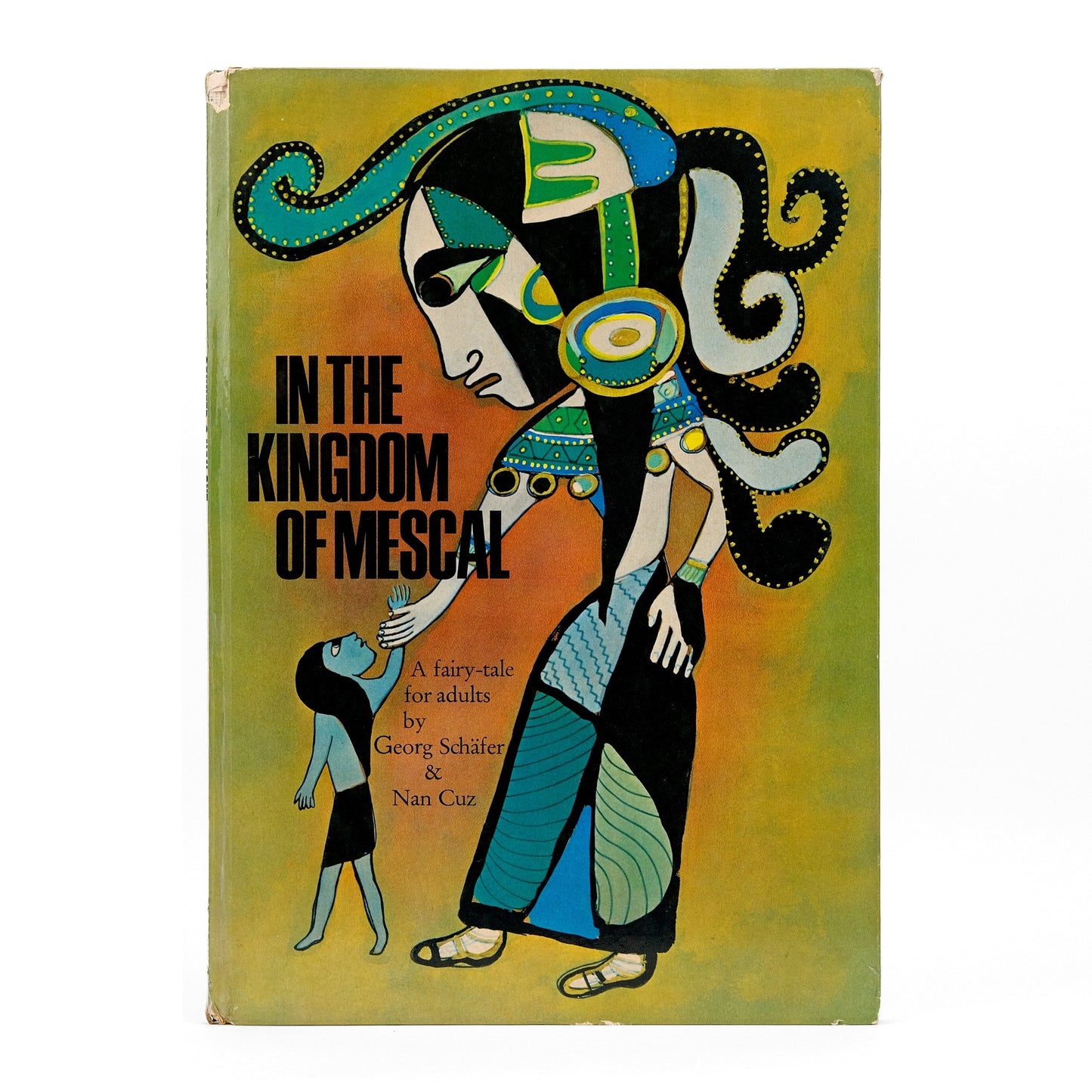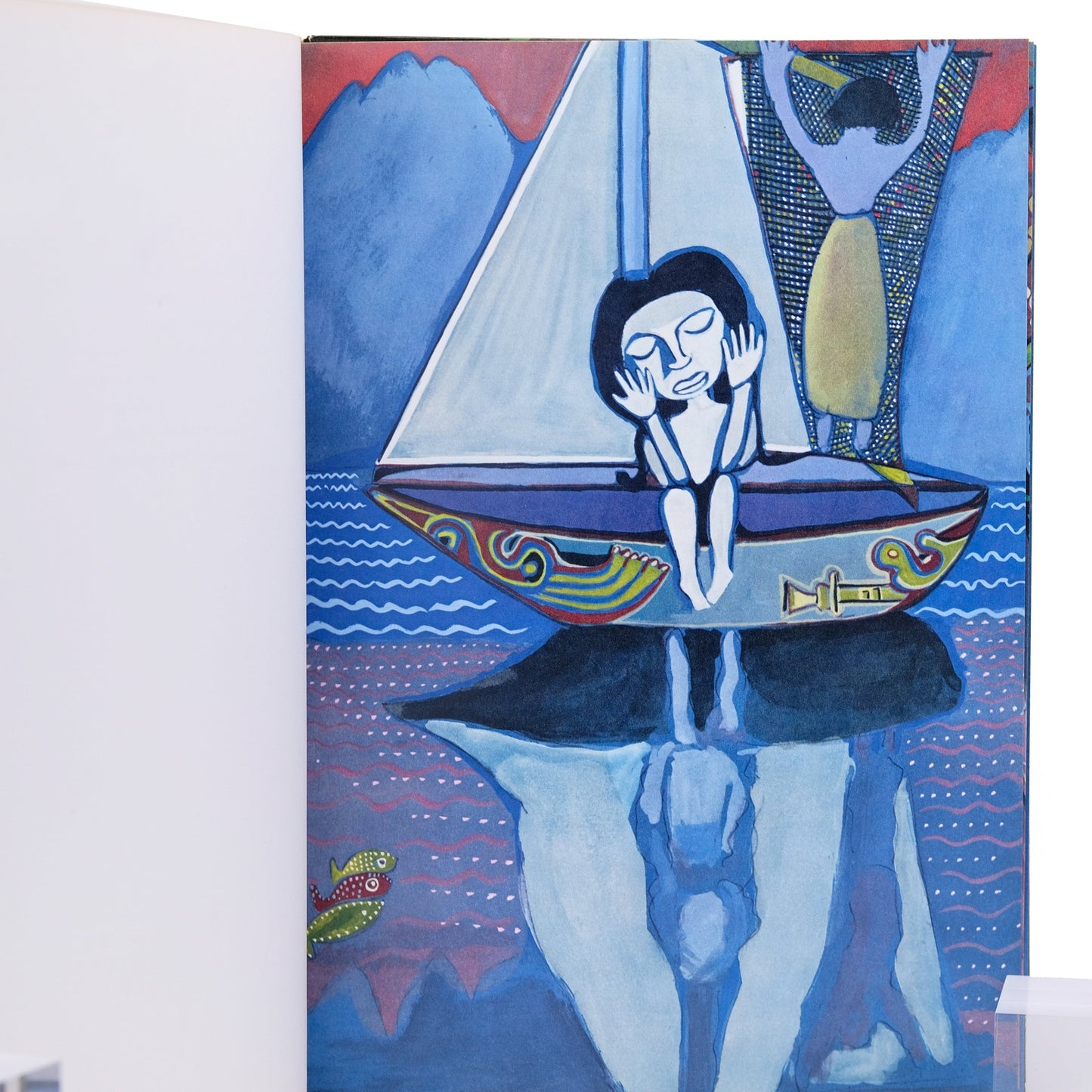SCHÄFER, Georg (text), and Nan Cuz (illustrations)
SCHÄFER, Georg (text), and Nan Cuz (illustrations)
Berkeley, CA: Shambala Publications, 1970. Translated by Dinah Livingstone. Foreword by Nobel Prize-winner Miguel Ángel Asturias. First American edition (preceded by the 1969 UK edition, and the German-language edition of 1968). 4to. Glossy pictorial boards, as issued without jacket. 36pp.; illus. Sunning to front board, as usual; chipping and loss to material at spine ends and head of front board. Good or better; internally bright and clean. Dated (1972), inscribed, and signed by both authors to the title page.
A colorful reimagining (by way of Saint-Exupery's The Little Prince) of a Central American Indian legend about a boy who "longs to get behind the appearance of things" and discover an unmediated version of reality. A statement at the rear of the volume places explicit emphasis on the story's relationship to psychedelic drugs, calling it the same "kind of journey described by Aldous Huxley in The Doors of Perception," and making clear that the artistic genesis of the book was rooted in Schäfer and Cuz's post-war experiments with synthetic mescaline. Schäfer (1926-1991) was a German painter, poet, and early enthusiast of the burgeoning psychedelics movement, having participated in experiments with LSD-discoverer Albert Hofmann in the 1940s and 50s. Nan Cuz (1927-2019) was the chosen name of Irmgard Cuz Heinemann, a painter born in Guatamala to a German father and a Mayan mother; Schafer's first wife. The success of In the Kingdom of Mescal within the hippie subculture lead to Schäfer increasingly embracing his newfound role as a counterculture figurehead, ultimately driving a rift between he and Cuz, according to an account of their relationship in Guatemalan magazine Revue. The authors' inscription here is to Dr. Margaret Ann Storkan (1919-2000), an American dermatologist, whose relation to Schäfer and Cuz we have been unable to determine. An uncommon title, particularly signed.
Couldn't load pickup availability














